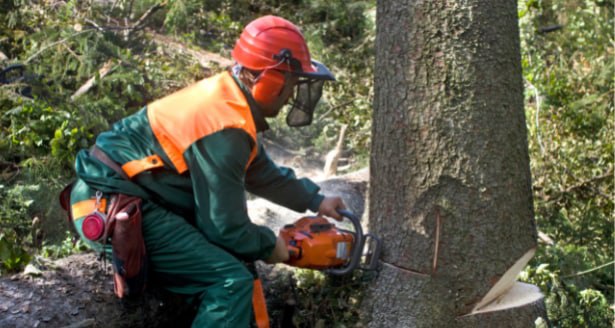
Introduction: In the dynamic landscape of agricultural land management, every element is crucial in maximising productivity, sustainability, and environmental stewardship. Among these elements, trees stand out as multifunctional assets that offer numerous benefits for farmers and their cultivated land. At Maidstone Tree Care, we understand the importance of tree trimming in agricultural land management and the potential for strategic tree care practices to enhance farm productivity, soil health, and ecological diversity.
The Role of Trees in Agricultural Landscapes
Trees play diverse roles in agricultural landscapes, providing a range of benefits that contribute to farm resilience and sustainability:
- Windbreaks and Shelterbelts: Planted along field edges, windbreaks and shelterbelts mitigate wind erosion, reduce evaporation, and protect crops from wind damage, ultimately improving crop yields and farm profitability.
- Soil Stabilisation: Tree roots help bind soil particles together, preventing erosion and reducing the risk of soil loss due to water runoff. This helps maintain soil structure, fertility, and moisture retention, promoting healthy crop growth.
- Biodiversity Enhancement: Trees provide habitat and food sources for beneficial insects, birds, and other wildlife that contribute to pest control, pollination, and farm ecosystem balance. Enhancing biodiversity can reduce the need for chemical inputs and improve overall farm resilience.
- Microclimate Modification: Trees influence local microclimates, creating cooler, more humid conditions beneath their canopy that benefit certain crops and livestock. This can help mitigate heat and water stress in plants and animals, particularly during hot, dry periods.
Tree Trimming for Agricultural Benefits
Strategic tree trimming is essential for optimising the benefits of trees in agricultural landscapes:
- Canopy Management: Trimming tree canopies allows for better light penetration and airflow, reducing disease risk and promoting uniform crop growth. It also prevents overhanging branches from shading crops or interfering with farm machinery operations.
- Height Control: Controlling tree height through pruning helps maintain the balance between wind protection and light interception, ensuring that windbreaks remain effective while minimising competition with crops for sunlight and nutrients.
- Selective Thinning: Thinning out dense tree stands improves the light distribution and air circulation, reducing the risk of fungal diseases and improving crop quality. It also enhances the aesthetics and accessibility of farm landscapes.
- Safety and Infrastructure Maintenance: Regular tree trimming helps identify and address potential safety hazards, such as dead or diseased branches, that could pose risks to farm workers, livestock, or infrastructure. It also ensures that trees remain healthy and productive over time.
Conclusion: Trees are valuable allies in the quest for sustainable agriculture, offering many benefits that enhance farm resilience, productivity, and ecological diversity. Through strategic tree trimming and careful land management practices, we can harness the potential of trees to support healthy, thriving farms and landscapes.
Call us on: 01622 234592
Click here to find out more about Maidstone Tree Care
Click here to complete our contact form and see how we can help with your tree’s needs.